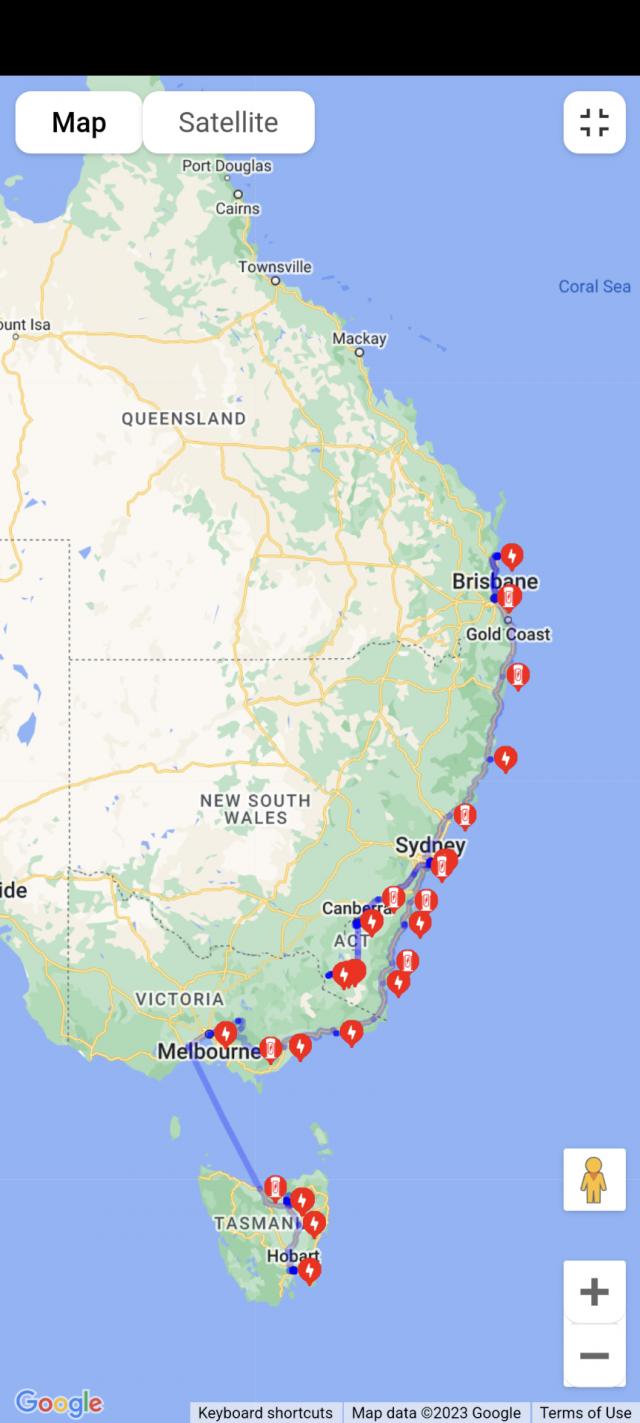
The world is moving towards cleaner energy sources, and electric vehicles are playing a crucial role in that transition. Electric cars are becoming more popular, and the availability of charging stations is increasing to support them. However, there are still some hiccups in the charging network, as experienced by Mark Purcell and his family on a recent road trip from the Sunshine Coast in Queensland to Hobart in Tasmania and back.
Mark tells us that over the summer holidays he drove 8000km, visiting 19 Tesla Superchargers with zero wait time at a total cost of $333. The trip was in his Tesla Model 3 Performance, and he had a great time busting myths about the capabilities of electric vehicles. He travelled through some spectacular mountain scenery in the Snowy Mountains in NSW, Lake Mountain in VIC, and Ben Lomond in TAS.
There were some challenges, though. Chargers in the gap between Eden and Lakes Entrance are built at Orbost and Cann River, but still not yet commissioned. Stop the press — Cann River is now open. There’s now one Tesla Supercharger and three public fast chargers open there.
Multiple sites are under construction in this 400 km stretch of highway between Bega and Sale. Once these fast chargers are operational in Mallacoota, Orbost, Lakes Entrance, Omeo, and Bairnsdale, the adventure will have gone out of the trip. But it will still be fun, with lots of chats at the charging stations.
Mark describes some difficulties he found in Marlo, where one destination charger was working out of two. When he checked on his trip, neither was working. He had to wait for three hours at an AC charging point 200 km from the nearest DC fast charger. The charger was in use, and he had to wait at the Marlo hotel. Another Tesla driver was using the only working charger, and Mark checked in as waiting on the PlugShare app, but the other driver didn’t see it as he had not checked in with PlugShare. By the time they realised the car was moving, they had decided to stay overnight so he could do his three-hour charge.
At a charger in Hunter Valley, NSW, Mark had a similar experience. A Tesla was parked at the charger but not plugged in, so he plugged the car in, which prompted a notification. The driver quickly came and moved his car.
“He thought they could use it as a parking spot.”
Mark tells us that the non-Tesla fast chargers on the main coastal route between Sydney and Melbourne were only 50 per cent operational. Thankfully, the regional inland NRMA network all worked and were free.
Mark used the PlugShare app to plan his trip.
Tasmania was even better. “It was hard to drive more than 50 km without finding an EV fast charger.”
His blog contains this typical comment: “Overall a good day’s driving (734 km), stopped at three Superchargers and personally had zero wait for a free stall, lots of shared charging only delivering a slow 65 kW. Others arriving after me did have wait times of five–10 minutes, but the turnover was quick.”
He says that there was a “pack of Teslas playing leapfrog” moving down the highway.
With his Model 3 Performance, he was able to be the first at the chargers, or even skip to the next one with his longer range. Mythbusting and having fun.
All in all, it seems like electric cars and their charging stations are becoming more and more common. As the charging infrastructure continues to expand, we can expect road trips to become even easier and more enjoyable in the future. Until then, keep an eye out for charging stations, and don’t be afraid to ask other EV drivers for tips and advice!
